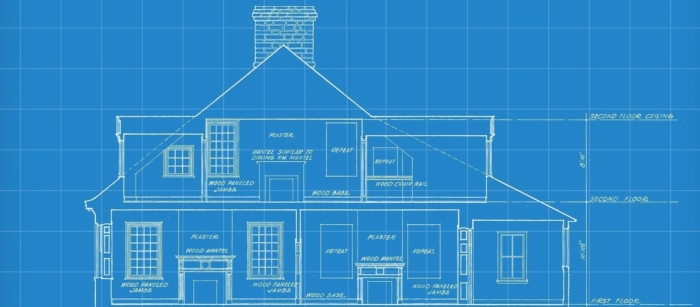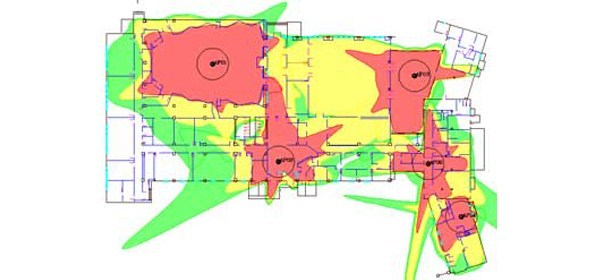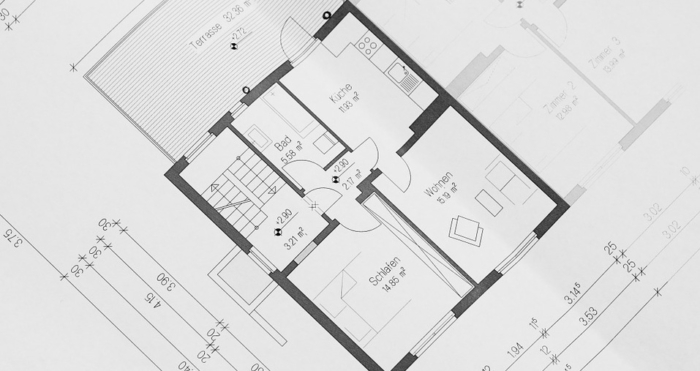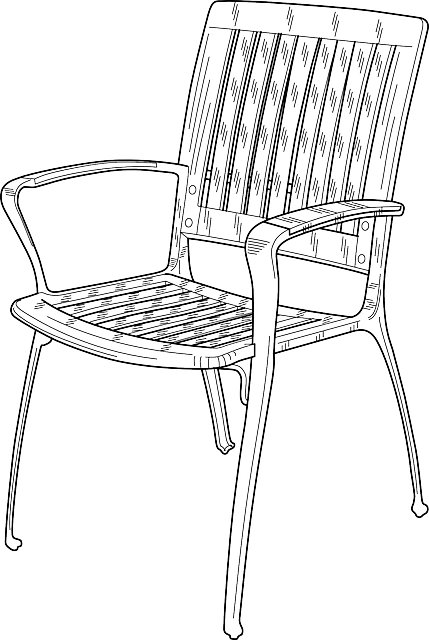Google Knows Where You Sleep & What Your House is Made Of
Last updated 10/25/21 ✧ First posted 05/19/15
~9 minutes to read.
Contents
I don’t know of any murder cases where the killer stuffed the victim’s body into a wall to hide it. Maybe because it never happens… or maybe because every time it’s happened, the killer has gotten away with it.
I mean there’s really no way to be sure, right?
Well, not yet. But it’s conceivable that in the near future, you could find out what’s in your walls just by Googling it.

The idea that Google might know what’s going on in your walls – and more worryingly, in your house – is closer to reality than you might suspect.
The Mapping of Internal Spaces
In a great post about a Google patent at one of my favorite blogs, SEO by the Sea, search marketing director Bill Slawski writes about the mapping of internal spaces:
The approach behind the patent is the following method.
(1) Identifying a map of an indoor space,
(2) Receiving inertial navigation signals (sensor signals from accelerometers, etc.) from a set of mobile devices moving through that indoor space and
(3) Calculating user trajectories based on the inertial navigation signals. This method provides direction and speed of movement of the mobile devices being tracked. Tracking these trajectories helps to identify walkable areas of the indoor space being targeted, and where turns take place among these paths. The inertial navigation signals (INS) may include: accelerometer data, gyroscope data, and compass data.
By the way, here’s what Bill had to say about this post the first time it was published:

Google isn’t just tracking your phone’s position in your home. It’s tracking how fast it’s moving, how fast it’s speeding up or slowing down, what direction it’s pointing, the latitude, longitude, and altitude, how strong the wireless signal is, and anything else it can scrape out.
Your phone collects all that data. Your phone also sends data to Google even if you opt out. This has been happening for years.
Which Room is Which?
It is astonishingly easy for Google to figure out your floor plan and the layout of your furniture with this information.
Think about your different behavior in different rooms throughout the day.
Your bedroom is the easiest to spot. Where else does your phone report “I’m plugged in, it’s 11pm, alarms are set, and I’m not being used for the next 7 hours”?
The bedroom is a fitting anchor point for what I’m now calling Remote Wireless Domucartography – domu from Latin domus meaning house.

We know some things about bedrooms, right? You and I? Let’s think about bedrooms. Bedrooms usually have one little room attached – a closet. That room doesn’t get much cell phone action.
Some bedrooms may also have bathrooms attached, and bathrooms will, for short periods of time, get a lot of cell phone action. (I mean c’mon, are you supposed to just sit there?)
Bedrooms also connect to the main house, but they almost never have a door to the outside – unless, sometimes, it’s a deck above a lower level of the house. Thank goodness for that altimeter.
Based on these common things about bedrooms, I’d guess 90% of homes just got a little more mapped out.
We can also use the total size of the home – something Google can ascertain just from looking at satellite imagery it certainly has – to establish some boundaries.
For instance, if you have home small enough to be a studio, or large enough to be a mansion, some of these rules may not apply. A tiny studio will likely not have two bathrooms, while a mansion will have far more. The map data gives Google an estimate for what it should be looking for.
The other rooms, like kitchens, dining rooms, living rooms, dens, and whatever else, may be a little harder to differentiate. Google will know your wireless signal strength, however, and know that wireless access points are not likely to be stationed in the kitchen. And while you don’t often go into your dining room to grab something and then walk out right away, most people do this in their kitchens looking for food.
I’d say it will still be pretty easy to determine the layout of the rest of your house, especially with a few more logical rules thrown in too. Google will know where your walls are because you’ll obviously never walk through them.
Then, if there are any blank spaces, it will assume they’re support columns, rarely-used storage areas, boarded-up areas where you keep your dead bodies, that sort of thing.
That’s what you and I can figure out on our own with this data. Now imagine those brilliant Google engineers feeding billions of these datapoints into their machine learning algorithms. They’ll be able to predict where you are with ease.
I don’t usually put a ton of stock in AI, but in this case, I have no doubt that it would be trivial for an AI to figure out upwards of 95% of all houses.
Hell, with a couple months of exploring that data, they could probably build a better floor plan than most architects.

What Your Walls Are Made Of
You may be aware that wireless technology is not actually black magic, but really just radio signals flying through the air all over the place all the time that we just tap into.
Which, in a way, is sort of like magic.
These signals pass through walls, floors, furniture – even you. This is obvious in the sense that you can block your router with your body and still get service, but we’re not used to thinking about things going through our bodies in that way.
The thing is, when the signal passes through your body – or anything else – it does slow down, just a little bit. Not enough to notice with one wall, but if you’ve got a lot of walls and furniture between you and your wireless access point, you’ll get slower service.
Google can see what’s in your walls using these signals the same way that scientists can figure out what our planet is made out of.
Earth has a liquid molten core, which you probably know – but how do we know this at all? It’s not like scientists have been there, and the lizard people dwelling beneath the surface are notoriously uncooperative.

We know because of waves. Earthquakes are a form of waves, just like radio waves in many ways. Using knowledge of how different types of waves travel through different types of materials, it’s possible to figure out what materials are beneath us without so much as even touching a shovel.
(Quick aside: this is different than how we know about what other planets are made from, which has more to do with magnetism and solar wind. It’s even more different than how we know what stars are made from, which is entirely thanks to an under-appreciated female scientist named Cecilia Payne.)
If we can do all that, Google can definitely use their technology to determine the composition of your walls. Heck, in 2011 a tenth grader did it in a science fair project. Google is at least that smart.
(Sometimes that link goes down – here’s a backup in case it’s not working today.)
So all Google has to do is a few studies on how wifi waves pass through various types of materials, and they have it made. The waves that pass through hollow walls would look different than waves passing through fiberglass, or brick, or those dead bodies we stuffed in there.
On the upside, if your great-great-grandmother hid away her gold coin fortune in your floorboards, you might like being able to Google that. (Be wary if Google tries to buy your house right after this feature is launched.)
And in case the wifi data wasn’t enough, don’t forget that you’re also connected to cell towers that triangulate your location, which means three more signals that are always on. It’s a whole mess of data, and that’s kind of Google’s thing.
Is This Legal?
Hah! Good one.
The serious answer to this is that they’d probably update their privacy policies to make you agree to it without realizing it just by using these services.
Maybe, though, someone notices this new clause, and there’s public outcry. Maybe they say they turn it off. Do they actually? I know what I’d bet on.
They might claim to anonymize your data by removing all your personal information and just using it in aggregate, but come on – how can you anonymize your personal habits and your home layout?
It might not be legal for the police to use this information, at least without a warrant, although the laws are probably a decade behind technology like this. There are about a hundred legal hoops to jump through for this to be admissible in court.
Your local cops are one thing, but government spying agencies like the NSA, and the joint intelligence alliance Five Eyes, probably have their own direct lines into your phone already. Living off the grid is looking better every day, huh?
Conclusion
So why would Google want to do this? I don’t know. I’m not saying they do want to do this and I’m certainly not accusing them of anything here.
I’m just saying they could.
I’m just saying there’s not really much motivation or regulation for them not to.
I just think it’s useful to speculate about an organization’s maximum capabilities.
There is one way to know if Google knows your house’s floor plan, though.
All you have to do is invite famed Googler Larry Page over to your home.

Turn up the heat so it’s a little warmer than usual. Give him some extra salty snacks. He’ll be thirsty, and you’ll keep the water flowing. Give him plenty to drink.
Eventually, he’ll stand up, rub his hands together, and say, “where’s your bathroom?”
That’s when you’ve got him. Stare him down. Don’t break eye contact. Say: “you know where my bathroom is, Larry Page. Don’t try to hide it. You know.“
His face will turn red, half from anger and half from embarrassment. He may spit out a half-hearted denial. But you’ll know, and he’ll know you know.
He will then turn and walk straight for your bathroom.
Because Google knows.
✧ ✧ ✧
Written by Ethan J. Hulbert.






